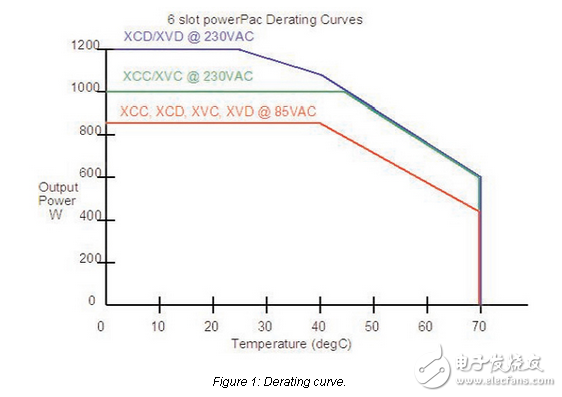
资料下载

外壳温度与环境温度
外壳温度与环境温度
当你想要控制一个设备的温度时,关于系统环境温度的模糊性会导致降额曲线的不精确。测量外壳温度而不是环境温度可以简化和提高热测试过程的准确性。
环境温度是指一个房间内的温度,或讨论物体周围的温度。对于电子元件,环境温度以及附近组件的功耗和元件自身的功耗是极端温度的主要来源。极端温度会损坏部件,应尽可能避免。不幸的是,通常情况下,限制环境温度是不可能的,因为特定的应用程序中使用的设备。终端系统设计者唯一可用的选项是限制设备本身组件的功耗。这是通过在高环境温度的应用程序中限制流经这些组件的电流(有效地降低电源功率限制)来实现的。这种降低的功率限制,被称为“额”,通常是在数据表中指定使用“降额曲线”(见图1)。

Figure 1 shows the derating curves for the Xgen power supply. Taking the XCC/XCV model operating at 230 Vac as an example, the power supply is rated to output 1000 watts from 0°C to 45°C ambient. Then from 45°C to 70°C, the power supply is then linearly derated to 600 watts. The power supply is not rated for operation at ambient temperatures higher than 70°C. If the power supply is operated within these limits, any harmful thermal conditions are avoided. However, the accuracy of the derating curve is limited by the accuracy of the ambient temperature measurement, and this raises a number of issues, which will be discussed in the next section.
声明:本文内容及配图由入驻作者撰写或者入驻合作网站授权转载。文章观点仅代表作者本人,不代表电子发烧友网立场。文章及其配图仅供工程师学习之用,如有内容侵权或者其他违规问题,请联系本站处理。 举报投诉
- 相关下载
- 相关文章







